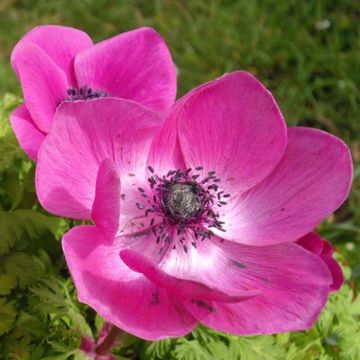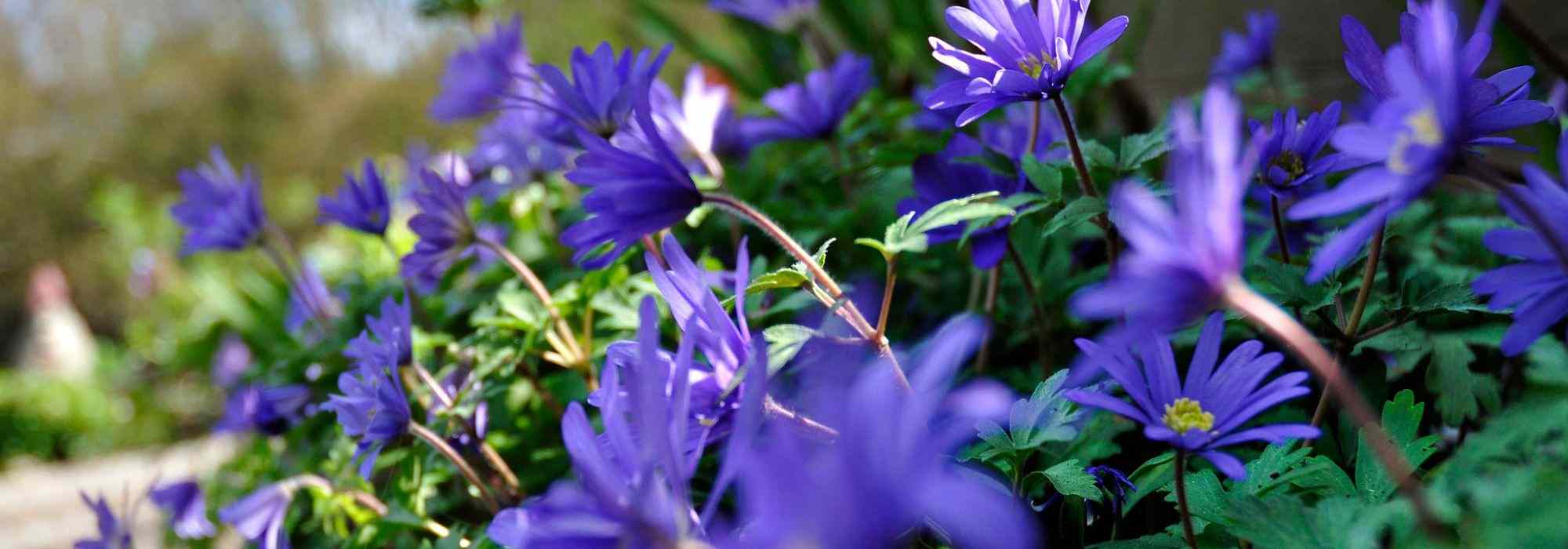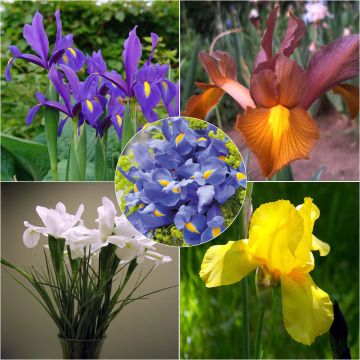

Anemone nemorosa Virescens - Wood Anemone


Anemone nemorosa Virescens - Wood Anemone
Anemone nemorosa Virescens - Wood Anemone
Anemone nemorosa Virescens
Wood Anemone, Windflower, Thimbleweed.
Special offer!
Receive a €20 voucher for any order over €90 (excluding delivery costs, credit notes, and plastic-free options)!
1- Add your favorite plants to your cart.
2- Once you have reached €90, confirm your order (you can even choose the delivery date!).
3- As soon as your order is shipped, you will receive an email containing your voucher code, valid for 3 months (90 days).
Your voucher is unique and can only be used once, for any order with a minimum value of €20, excluding delivery costs.
Can be combined with other current offers, non-divisible and non-refundable.
Why not try an alternative variety in stock?
View all →This plant carries a 6 months recovery warranty
More information
We guarantee the quality of our plants for a full growing cycle, and will replace at our expense any plant that fails to recover under normal climatic and planting conditions.

Would this plant suit my garden?
Set up your Plantfit profile →
Description
Anemone nemorosa Virescens is a new wood anemone, a rather curious plant that is both charming and unique. Its flowering, in March-April, takes the form of green flowers resembling small palm trees, composed of a double row of finely cut leafy bracts surrounding a tiny yellow heart. This flowering extends over several weeks, effectively carpeting damp and shaded areas with an unusual yet elegant greenery. 'Virescens', awarded by the RHS, is a reliable and high-performing variety under suitable growing conditions, an anemone that perfectly embodies what could be called 'green power'.
Anemone nemorosa 'Virescens' belongs to the ranunculaceae family and it is a form of the European wood anemone, which is distributed throughout almost all of Europe, western Asia, and boreal America. This small plant forms a cushion 15 cm tall, spreading over 20 cm or more. It produces unbranched brown vertical stems that, early in spring from late March to mid-May, bear 6 whorled, finely cut bracts, forming a well-organised small, 4 cm wide tuft, replacing the usual tepals found on anemone flowers. The rhizome of the wood anemone 'Virescens' is fleshy and brittle, growing only 3 centimetres per year. It runs just below the surface of the soil. After flowering, it produces numerous slightly hairy three-lobed leaves. The flower does not occupy the same position year after year, it moves along with its rhizome.
The wood anemone Virescens is ideal as shady ground cover, in moist soil. It may be slow to establish, but will eventually form interwoven rhizome carpets that no weed can infiltrate. You can use it at the base of hedges, shrubs, and deciduous trees. Pair it with Anemone blanda, which will succeed it in flowering and require the same growing conditions. In the wild, the wood anemone develops and blooms in spring, when the trees are still leafless. It completes its vegetative cycle in summer when its leaves disappear, corresponding to its dormant period. This is the most opportune time to plant it under a tree or dress the base of hedges. It doesn't mind competition from tree and shrub roots.
Anemone nemorosa Virescens - Wood Anemone in pictures


Plant habit
Flowering
Foliage
Botanical data
Anemone
nemorosa
Virescens
Ranunculaceae
Wood Anemone, Windflower, Thimbleweed.
Cultivar or hybrid
Other Anemone
View all →Planting and care
Anemone nemerosa 'Virescens' should be planted in the autumn, with a spacing of 30 cm, in a humus-bearing, moist, well-drained soil in a shaded location. Mix ericaceous soil with your garden soil if it is too chalky. In summer, it goes into dormancy and disappears underground. Mulch the soil with dead leaves to protect the crown in winter. Divide the clumps every 4 years in spring. It is susceptible to leaf eelworms and occasionally anemone smut. Additionally, it can be affected by black spot disease and powdery mildew, as well as caterpillars and slugs.
Planting period
Intended location
Care
Planting & care advice
This item has not been reviewed yet - be the first to leave a review about it.
Similar products
Haven't found what you were looking for?
Hardiness is the lowest winter temperature a plant can endure without suffering serious damage or even dying. However, hardiness is affected by location (a sheltered area, such as a patio), protection (winter cover) and soil type (hardiness is improved by well-drained soil).

Photo Sharing Terms & Conditions
In order to encourage gardeners to interact and share their experiences, Promesse de fleurs offers various media enabling content to be uploaded onto its Site - in particular via the ‘Photo sharing’ module.
The User agrees to refrain from:
- Posting any content that is illegal, prejudicial, insulting, racist, inciteful to hatred, revisionist, contrary to public decency, that infringes on privacy or on the privacy rights of third parties, in particular the publicity rights of persons and goods, intellectual property rights, or the right to privacy.
- Submitting content on behalf of a third party;
- Impersonate the identity of a third party and/or publish any personal information about a third party;
In general, the User undertakes to refrain from any unethical behaviour.
All Content (in particular text, comments, files, images, photos, videos, creative works, etc.), which may be subject to property or intellectual property rights, image or other private rights, shall remain the property of the User, subject to the limited rights granted by the terms of the licence granted by Promesse de fleurs as stated below. Users are at liberty to publish or not to publish such Content on the Site, notably via the ‘Photo Sharing’ facility, and accept that this Content shall be made public and freely accessible, notably on the Internet.
Users further acknowledge, undertake to have ,and guarantee that they hold all necessary rights and permissions to publish such material on the Site, in particular with regard to the legislation in force pertaining to any privacy, property, intellectual property, image, or contractual rights, or rights of any other nature. By publishing such Content on the Site, Users acknowledge accepting full liability as publishers of the Content within the meaning of the law, and grant Promesse de fleurs, free of charge, an inclusive, worldwide licence for the said Content for the entire duration of its publication, including all reproduction, representation, up/downloading, displaying, performing, transmission, and storage rights.
Users also grant permission for their name to be linked to the Content and accept that this link may not always be made available.
By engaging in posting material, Users consent to their Content becoming automatically accessible on the Internet, in particular on other sites and/or blogs and/or web pages of the Promesse de fleurs site, including in particular social pages and the Promesse de fleurs catalogue.
Users may secure the removal of entrusted content free of charge by issuing a simple request via our contact form.
The flowering period indicated on our website applies to countries and regions located in USDA zone 8 (France, the United Kingdom, Ireland, the Netherlands, etc.)
It will vary according to where you live:
- In zones 9 to 10 (Italy, Spain, Greece, etc.), flowering will occur about 2 to 4 weeks earlier.
- In zones 6 to 7 (Germany, Poland, Slovenia, and lower mountainous regions), flowering will be delayed by 2 to 3 weeks.
- In zone 5 (Central Europe, Scandinavia), blooming will be delayed by 3 to 5 weeks.
In temperate climates, pruning of spring-flowering shrubs (forsythia, spireas, etc.) should be done just after flowering.
Pruning of summer-flowering shrubs (Indian Lilac, Perovskia, etc.) can be done in winter or spring.
In cold regions as well as with frost-sensitive plants, avoid pruning too early when severe frosts may still occur.
The planting period indicated on our website applies to countries and regions located in USDA zone 8 (France, United Kingdom, Ireland, Netherlands).
It will vary according to where you live:
- In Mediterranean zones (Marseille, Madrid, Milan, etc.), autumn and winter are the best planting periods.
- In continental zones (Strasbourg, Munich, Vienna, etc.), delay planting by 2 to 3 weeks in spring and bring it forward by 2 to 4 weeks in autumn.
- In mountainous regions (the Alps, Pyrenees, Carpathians, etc.), it is best to plant in late spring (May-June) or late summer (August-September).
The harvesting period indicated on our website applies to countries and regions in USDA zone 8 (France, England, Ireland, the Netherlands).
In colder areas (Scandinavia, Poland, Austria...) fruit and vegetable harvests are likely to be delayed by 3-4 weeks.
In warmer areas (Italy, Spain, Greece, etc.), harvesting will probably take place earlier, depending on weather conditions.
The sowing periods indicated on our website apply to countries and regions within USDA Zone 8 (France, UK, Ireland, Netherlands).
In colder areas (Scandinavia, Poland, Austria...), delay any outdoor sowing by 3-4 weeks, or sow under glass.
In warmer climes (Italy, Spain, Greece, etc.), bring outdoor sowing forward by a few weeks.



























































